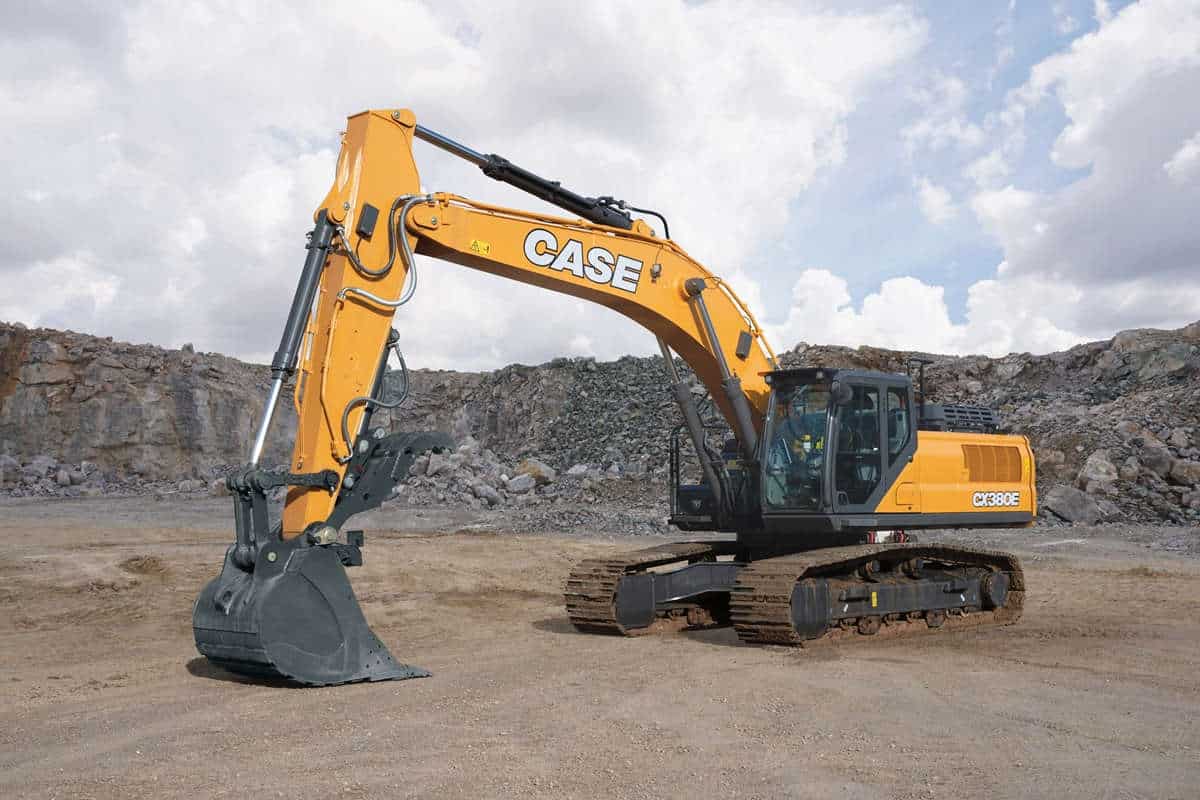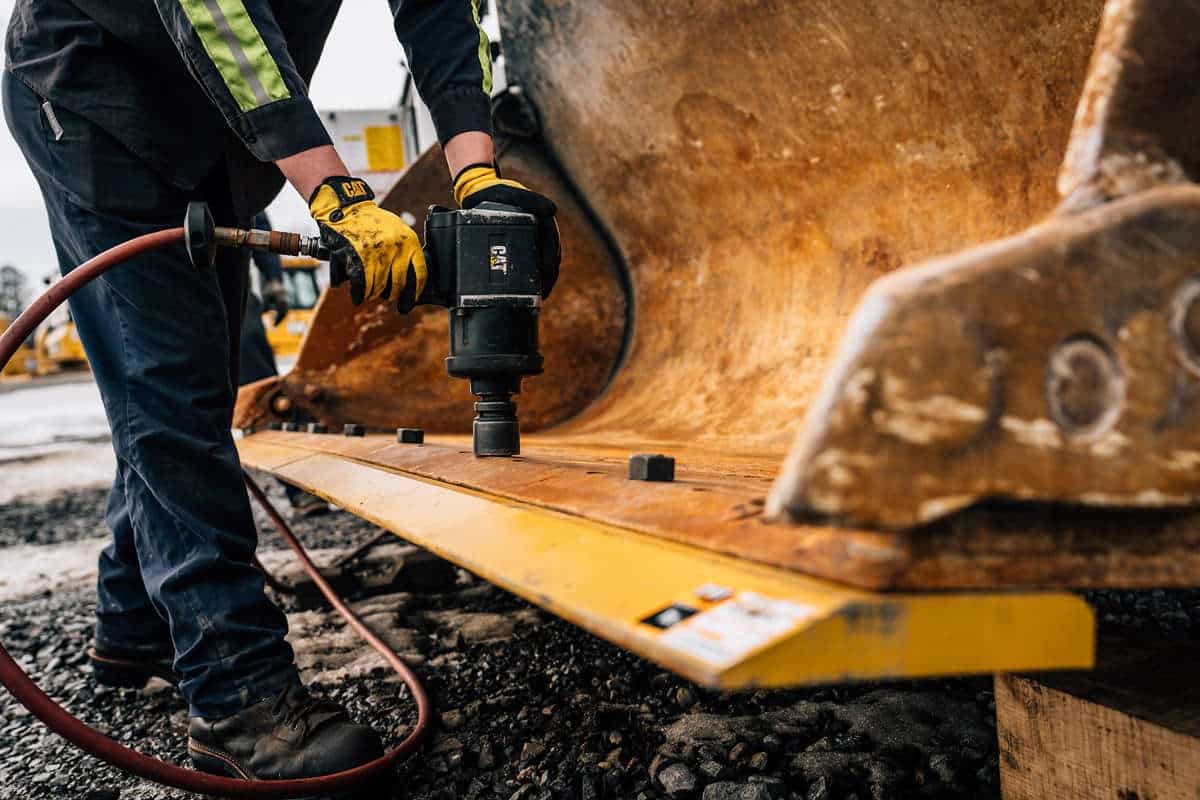Five Questions to Ask Before Selecting a Wheel Loader

- Common utility applications where wheel loaders are used include:
- Electrical installations
- Pipe laying
- Trenching and backfilling
- Water and sewer installation
Machine size, lift capacity, bucket size and breakout force are all factors to consider when needing to move material. Contractors should consider how the machine will perform, if the machine is versatile enough, if the machine is easy to service and the machine’s safety features before purchasing. By asking the following five questions, utility contractors can better utilize these machines without sacrificing power and performance.
What performance features will maximize jobsite productivity?
Utility contractors tend to work in muddy, soft terrain. It is important to select a wheel loader with optimal operating weight, horsepower, torque, traction, lift capacity and lift height to work in these ground conditions.
“Utility contractors require a smaller-size wheel loader with good lift capacities, tipping loads, breakout force and fast cycle times,” says Mike Stark, Doosan Wheel Loader Product Specialist. “Typically, they are working in confined spaces so they need a smaller wheel loader, but with the power and performance of a larger wheel loader.”
According to Stark, wheel loaders in the 150- to 175-hp size class are ideal for utility applications. When the right-size wheel loader is paired with a bucket — preferably a 2.6- to 3.7-cu-yd bucket — it can efficiently move material and helps generate revenue because it can complete more cycle times than other types of earthmoving machines.
“By knowing the density of the material being moved and matching it with the size and capacity of a bucket, utility contractors can determine what bucket size is needed for the size wheel loader he selects,” he says. “If the bucket is sized correctly for the machine so it has adequate lift capacity and dump height, it can reduce the number of passes needed to fill a dump truck.”
Contractors should also consider the machine’s static tipping loads and cycle times for improved jobsite productivity, adds Stark.
“It takes time to lift, dump and curl the bucket, so the faster utility contractors can load and dump material, the better their productivity,” says Stark. “The faster the machine can travel, the quicker the cycle times can be.” Looking at these specs of a wheel loader is important to good productivity.
Other important features include traction aid devices, such as limited-slip differentials and hydraulic locking differentials, which help deliver powerful pushing force and superior traction when needed. Choosing the right type of tires for the application — either radial or bias — helps maintain good traction.
“Contractors may get better tire life and fuel economy when using radial tires,” says Stark. “However, it depends on the contractor’s preference and jobsite application on what tire and tread will help them be the most productive.”
What are the Tier 4 considerations?
With the implementation of additional technologies to meet strict Tier 4 emissions standards, it is important to ask the following questions to maintain good jobsite performance and productivity.
- Does the wheel loader have a diesel particulate filter (DPF)?
- What type of after-treatment technologies are being used?
- Does the wheel loader have a selective catalytic reduction (SCR) system? If so, how much diesel exhaust fluid (DEF) will I need?

How versatile is the wheel loader?
Machine versatility is important when working in utility applications to help maintain machine productivity. Oftentimes, a wheel loader is used to support an excavator for digging trenches and laying pipe, so it is important that the machines are a good working match.
A wheel loader should have the ability to use multiple attachments to reduce the amount of equipment needed on a jobsite. For instance, pallet forks and buckets can easily and quickly be interchanged on a wheel loader with a hydraulic quick-coupler. Some utility contractors may choose a tool carrier iteration with a parallel-lift linkage vs. a z-bar configuration. The parallel-lift style provides operators with excellent visibility to the attachment, especially when switching between attachments.
Is it easy to maintain?
Convenient service checkpoints, quality components and extended service intervals are factors to consider to keep maintenance costs low and daily production schedules moving. By looking at other machine costs — parts, labor, transportation cost, supplies, lubricants and GPS fleet-tracking systems, such as telematics — contractors can make better choices when purchasing a wheel loader and budget for ongoing maintenance. Stark recommends that contractors follow regular maintenance schedules, based on the manufacturer’s recommended guidelines, once they purchase a wheel loader.
“If a contractor does not perform routine maintenance on the machine, it can lead to costly downtime and unexpected machine issues down the road,” says Stark.
Contractors should complete a daily walkaround, checking for any obvious machine damage or wear. They should also inspect fluids, oils and filters and tire pressure. For a complete list of maintenance items, refer to the manufacturer’s operation and maintenance manual.
By working with a reliable dealership and following a planned maintenance (PM) contract, contractors can make sure their machine gets serviced on time and at a convenient time, adds Stark.
“It increases uptime dramatically if a contractor works with a reliable dealership,” he says. “Since wheel loaders are generally paired with excavators, it is important that the machines are up and running as quickly as possible.”
What are the safety features?
Since wheel loaders typically work on congested jobsites or in confined spaces, it is important that a wheel loader has helpful safety features such as a rearview camera, backup alarms and good visibility outside of the cab.
According to Stark, machine lighting is especially important for contractors who work early in the morning and continue late into the night.
Other features contractors should consider include:
- Hydraulic locking differentials
- Heated mirrors
- Emergency steering
By looking at the machine’s overall performance, versatility, serviceability and safety features, utility contractors can decide what type of wheel loader will best fit their application and complement their equipment fleet.
Allison McNeal is a Technical Writer for Two Rivers Marketing, based in Des Moines, Iowa.




